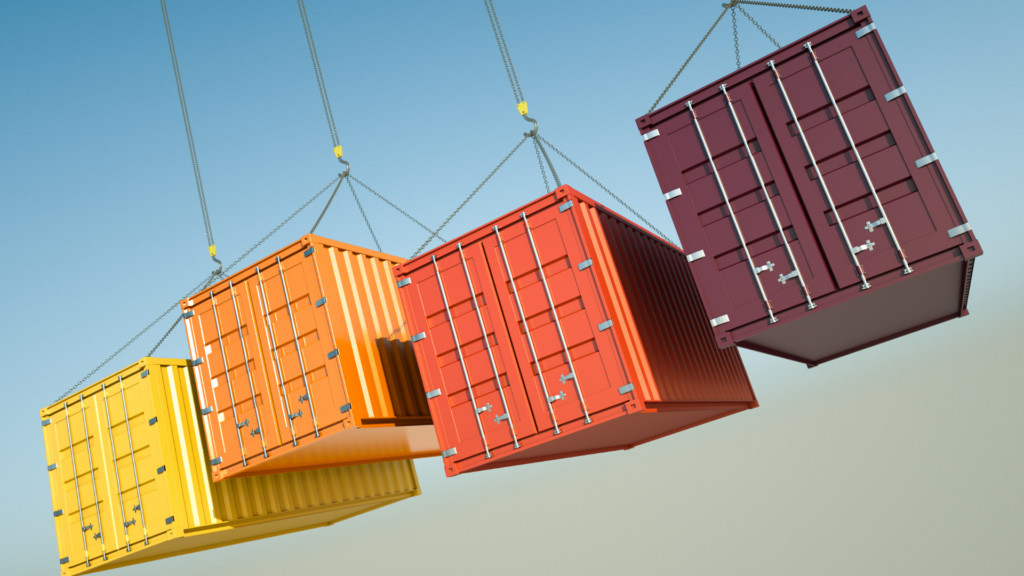
Everywhere you look, people seem to be talking about it. No, we don’t mean Squid Game, we mean the supply chain. In the U.S. consumers (and many businesses) were long accustomed to taking the supply chain for granted. It seemed to work flawlessly in the background, ensuring items we want and need got onto shelves and showed up to our doorsteps without us ever having to think about how they got there.
Now, not so much.
Dreaded supply chain issues are impacting the availability of a number of different products—from computers to cars to medicines to clothes. But “supply chain issues” is a general term that covers a lot of territory.
What’s Behind the Current Supply Chain Issues?
The pandemic revealed how much the system that seemed to work flawlessly before was always hanging by a string. The current issues are caused by a combination of factors that have created a perfect storm.
It starts at the plants where products are made. As Colleen Milazzo, Senior Vice President, Third Party Risk Software Products of Shared Assessments explains, “the pandemic still is not over and companies have not been able to get their full workforce back in place.”
“Plants in Vietnam where many of the goods most prized for the holidays are made: Nike, Adidas, and others, were shut down during the summer because of COVID,” adds Bob Jones, Senior Advisor at Shared Assessments. “They’re just coming back online now, too late for many retailers.”
Closed plants created a backlog that’s been exacerbated by fewer workers showing up when they open. All that means fewer products are getting made to begin with.
But it doesn’t stop there.
Weather conditions have the power to impact many levels of the supply chain. “Remember…the ‘Texas Freeze’ back in February, which shut down their power grid and impacted many of petrochemical manufacturing facilities, causing shortages to the electrical and plumbing supply companies,” says Charlie Miller, Senior Advisor at Shared Assessments.
“[Those companies] are still not back to normal,” he points out. And with winter approaching, a repeat is entirely possible.
On top of all that, transporting products is its own issue. “Currently, there is a domino effect starting with so many cargo ships waiting in the waters to unload their goods, not enough transportation to carry goods to destinations, and a lack of staff to replenish shelves with goods,” says Nasser Fattah, Senior Advisor at Shared Assessments.
Oh, and with the holidays coming up? The usual increase in consumer purchases threatens to make everything worse. Any one of these issues would be enough on its own to impact what products you have access to in stores and on ecommerce websites this year. All of them together means this is a problem experts foresee lasting well into the holiday seasons and beyond.
The Supply Chain is Full of Third Party Risk
A lot of this drives home just how many different third party organisations modern businesses depend on. The companies that make the products, the ones that handle transportation from one country to another, those that unload the shipping containers products are on, the ones that hire the truck drivers that get items from the port to a store or customer’s house. And then on top of that—the software companies each of these companies use, consulting companies they work with, any staffing companies they depend on—and the list goes on and on.
The Biden administration is trying to mitigate the problem by urging ports to stay open 24/7 and vendors to lengthen the hours their staff work. He’s even floated the idea of deploying the National Guard to step in for some of the positions that are currently understaffed, like unloading ships and driving trucks. But the government’s ability to solve this problem is limited. After all, they’ve been trying to find a solution to these supply chain woes for months.
At the end of the day, keeping the supply chain running requires many different businesses. Every time one is impacted, it creates a domino effect.
An important business lesson to take from this is: you can do everything right with your internal teams and the work they do, but still have your business disrupted in catastrophic ways because of third party risk.
How to Take Some Control Back with TPRM
There’s a lot in the world you can’t control—the past 18 months have made that abundantly clear. But you can work to be more aware of the potential risks your business faces, and take steps to ensure you’re reasonably well prepared to handle them when they happen.
“Having visibility into the supply chain’s end-to-end processes, including threats and risks that do exist or may transpire in these processes, provides tremendous insights for companies to proactively make sound decisions to best mitigate supply chain impact,” advises Fattah.
Businesses that invest in third party risk management (TPRM) and work to keep their programs up-to-date are in a much better position to weather disruptions like the supply chain upheavals occurring now. TPRM doesn’t make problems go away, but it ensures businesses are more likely to know what to expect and have a backup plan in place.
Every business will face problems outside of its control at some point. How you deal with them is up to you. It’s one area where you can take some power back.
This article was originally published by Shared Assessments and is shared with their kind permission
About The Author – Kristen Hicks
Kristen Hicks is a freelance writer and lifelong learner with an ongoing curiosity to learn new things. She uses that curiosity, combined with years of experience researching and writing, to cover risk management topics for Shared Assessments. You can find her on Twitter at @atxcopywriter.